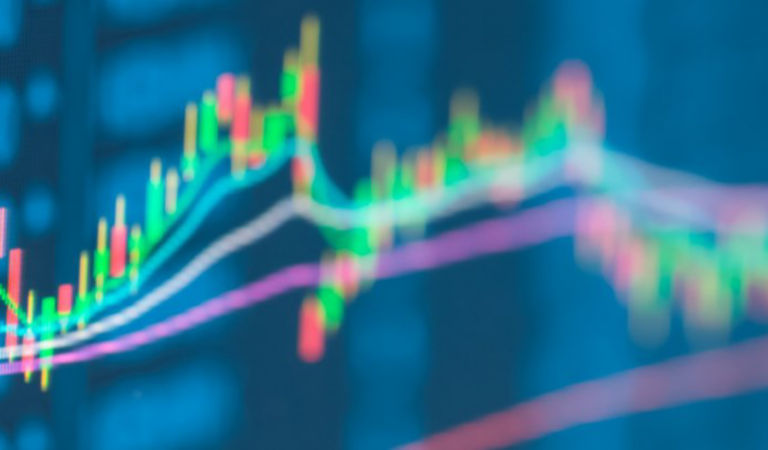Global equities (+7.5%) rebounded, closing out 2022 with a 15.6% loss year to date. Investors were encouraged by milder inflation, which provided greater scope for some major central banks to slow their pace of interest-rate hikes. In contrast, market sentiment was dented by anxiety about tighter central bank policy amid weakening global economic growth and cautious corporate commentary that added to signs of recession. Chinese equities soared after investors grew bullish on China’s economic outlook in 2023 following the government’s abrupt COVID pivot that ended mass testing, lockdowns, and quarantine for international travelers. However, China’s transition away from strict pandemic measures is proving to be painful as soaring COVID infections are severely straining the health care system and economy. The Bank of Japan (BOJ) surprised markets by unexpectedly tweaking its yield curve control (YCC) policy, allowing long-term interest rates to rise to alleviate some of the costs of prolonged monetary stimulus and pave the way for policy normalization.
Improvements in global supply chains helped to ease inflation pressures, although geopolitical tensions heightened as the war in Ukraine escalated and global trade relations were stressed. Europe’s energy crisis moderated, with European Union (EU) energy ministers agreeing to a cap on natural gas prices following months of debate over whether the measure will protect European households and businesses from extreme price spikes as temperatures plummet. The G7, Australia, and the EU agreed on a US$60 a barrel price cap on Russian seaborne oil, and Russia retaliated by banning the sale of its oil and petroleum products to countries that impose the cap. OPEC+ agreed to its biggest oil production cut since the onset of the pandemic, slashing output by two million barrels per day.
Global fixed income sectors recouped a portion of their losses from earlier in the year as most developed market sovereign yields stabilized at higher levels and spreads generally tightened. Despite persistent hawkish rhetoric from most developed market central banks, below-consensus inflation offered hope that most economies may have already experienced peak inflation. Most spread sectors generated positive excess returns, supported by recovering political stability in the UK, reopening in China, and light issuance. The US dollar weakened versus most currencies.
Commodities (+3.4%) increased, with all four commodity sectors generating positive returns. Prices were supported by optimism around China’s COVID pivot and a weaker US dollar.
Equities
United States
US equities (+7.6%) rallied following three straight quarterly declines, ending December with an 18.1% loss year to date. Greater optimism that the US Federal Reserve (Fed) would begin to scale back its aggressive pace of interest-rate hikes, along with outsized short covering and hedging, helped to fuel a sharp rebound in stocks in October and November before risk sentiment waned in December amid recession fears, macroeconomic headwinds, and downside earnings risks in the coming quarters. Inflation moderated as the core Consumer Price Index rose 6.0% year over year in November, down from 6.6% in September, offering hope that price pressures are finally abating. In December, the Fed raised interest rates by 50 basis points (bps), snapping a streak of four consecutive hikes of 75 bps. However, the Fed’s Summary of Economic Projections in December indicated a more hawkish outlook compared to its September forecast, with policymakers anticipating that inflation will remain elevated for longer and interest rates will peak at 5.1% in 2023, according to the Fed’s median dot-plot projection (above market expectations for a terminal rate in the range of 4.75% – 5.0%.) Third-quarter earnings lagged expectations, with some large technology companies reporting disappointing results and weaker forecasts. Cryptocurrencies were battered after the dramatic collapse of FTX sparked fears of contagion across the crypto industry. Democrats retained control of the Senate, and Republicans secured a narrow majority in the House of Representatives, likely deepening the legislative gridlock and diminishing the potential for significant government policy changes during President Joe Biden’s next two years in office.
Economic data released during the quarter signaled that the US economy continued to slow. Despite tighter financial conditions and rising inflation, broad strength in the labor market continued to underpin outsized wage growth and support consumer spending, complicating the Fed’s efforts to curtail inflation. Nonfarm payrolls grew at a solid pace during the quarter, the unemployment rate held at 3.7%, and average hourly earnings rose 5.1% annually in November, significantly above the pre-pandemic pace of 3.0%. In November, consumer spending moderated, with householdings disbursing more on services but trimming their outlays on goods. Retail sales surprisingly fell 0.6% — the largest decline of the year — while personal spending rose only 0.1%, a sharp pullback from October’s outsized gain of 0.9%. The personal savings rate slipped to 2.3% in October — the lowest since 2005 — and US household debt in the third quarter increased at the fastest pace in 15 years. The Conference Board’s Consumer Confidence Index fell sharply before rebounding well above forecast in December, as consumers’ more upbeat views of the economy and inflation lifted the index slightly above September’s reading of 108.0. The rapid increase in mortgage rates broadly depressed housing market activity, although home prices were surprisingly resilient. In November, the manufacturing sector contracted for the first time since May 2020 amid softer demand, production, and employment, while the services sector remained in expansionary territory. Small-business sentiment remained historically weak due to ongoing concerns about inflation and labor shortages.
Within the S&P 500 Index (+7.6%), nine of the 11 sectors posted positive results for the quarter. Energy (+22.8%) was the top-performing sector as the price of oil rose. Industrials (+19.2%) outperformed, led by the machinery (+25.8%) and aerospace & defense (+25.0%) groups. Materials (-7.1%) was another notable outperformer, driven by chemicals (+14.1%). Consumer discretionary (-10.2%) was the worst-performing sector, with the automobiles (-46.9%) and internet & direct marketing retail (-24.4%) groups detracting the most. Communication services (-1.7%) also underperformed, led lower by interactive media & services (-8.6%).
Europe
European equities (+10.5%) generated significant gains in the fourth quarter after stocks rallied sharply from October’s lows. Risk sentiment improved on optimism about a slower pace of interest-rate hikes by the Fed and the European Central Bank (ECB), moderating energy prices and inflation, and the view that the region’s economic downturn may not be as severe as initially feared. Stocks pulled back in December amid the stiff economic headwinds from tighter financial conditions, high inflation, and the cost-of-living crisis exacerbated by the war in Ukraine. Inflation in the eurozone remained near a record high but receded from a peak of 10.5% year over year in October, to 10.1% in November, and economists predicted that price pressures would recede further in December. The ECB forecast a relatively short and shallow recession, easing its pace of interest-rate hikes to 50 bps in December, in line with the Fed. However, ECB President Christine Lagarde struck a hawkish tone, warning that rates could rise by the same increment in each of the next few bank meetings. The ECB also outlined plans for quantitative tightening to begin in March as it seeks to reduce liquidity in the financial system and allow long-term borrowing costs to rise.
Europe’s energy crisis saw some relief; natural gas storage volumes were 10% above normal, thanks to liquefied natural gas (LNG) imports and warmer-than-average temperatures. In December, EU countries agreed to a US$60 per barrel cap on Russian oil prices, while EU energy ministers agreed to a gas price cap to alleviate the impact of the energy crisis. Nevertheless, historically high energy and food prices eroded consumers’ purchasing power. A trade conflict simmered between the EU and the US, as key provisions of the US Inflation Reduction Act, which take effect in January, feature subsidies that favor the clean-energy technologies of American manufacturers at the expense of their European counterparts.
Macroeconomic data provided evidence that the eurozone economy continued to stabilize, signaling that Europe may have reached the trough of its downturn. Improving global supply chains, softening inflation pressures, and a less severe energy crisis lifted the eurozone Manufacturing Purchasing Managers, Index (PMI) to a three-month high of 47.8 in December, up from 47.1 in November, indicating a slower pace of contraction. The preliminary eurozone Composite PMI for December showed that the services sector contracted at a slower rate. Eurozone economic sentiment in November rebounded for the first time since February, and a preliminary reading for December signaled further improvement, suggesting that lower energy prices and government relief packages helped to mitigate the ongoing cost-of-living crisis.
In the UK (+8.6%), Liz Truss was forced to resign as prime minister after her pro-growth plans and mini-budget agenda of unfunded tax cuts caused massive capital outflows and damaged the government’s reputation. Rishi Sunak was appointed to replace Truss and now faces the challenging task of restoring the government’s credibility and putting the UK’s longer-term finances on a sustainable footing. Chancellor Jeremy Hunt subsequently unveiled a more fiscally conservative budget that included £55 billion (US$65 billion) in spending cuts and tax increases, the equivalent of 1.9% of GDP. In Germany (+14.5%), improvements in consumer and business confidence bolstered market sentiment. The GfK consumer sentiment barometer forecast that consumer confidence will continue to rise in January, while the ifo Business Climate Index indicated that sentiment among manufacturers and services providers markedly brightened during the quarter. In Italy (+16.2%), the government lashed out at the ECB over interest-rate hikes, reflecting growing concerns about the impact of higher rates on Italian finances.
Pacific Basin
Pacific Basin equities (+5.9%) ended the quarter higher. In Australia (+9.7%), the Reserve Bank of Australia (RBA) surprisingly slowed its pace of policy tightening in October. The RBA hiked interest rates by 25 bps in each month during the quarter, lifting the cash rate to a 10-year high of 3.1% in December. The bank signaled further tightening ahead, even though price pressures cooled slightly, with RBA Governor Philip Lowe highlighting in October that inflation is lower compared to other countries and that the pace of wage growth isn’t sufficient to sustain inflation at the bank’s target band of 2% – 3%. However, the extremely tight labor market exerted upward pressure on wages. In November, employment surged by 64,000, vastly surpassing consensus forecasts for a 19,000 increase; the participation rate climbed to 66.8%, matching a record; and the unemployment rate held at 3.4%. Business confidence turned negative for the first time in 2022, and consumer confidence remained very pessimistic. Powered by strong consumption and rising imports, GDP grew 0.6% in the third quarter (5.9% annually), slightly below expectations and down from a second-quarter gain of 0.9%.
In Japan (+3.2%), the BOJ left its benchmark lending rates unchanged but surprised markets by raising the yield cap on its 10-year bonds, causing the yen to rise and government bond prices to fall. The decision was viewed as a step toward policy normalization after nearly a decade of central bank stimulus and allows yields to fluctuate 50 bps around the 0% target, up from the previous cap of 25 bps. Core inflation in November exceeded the BOJ’s target of 2% for the eighth consecutive month, rising 3.7% year over year to the highest level since 1981. The rapid rise in inflation amplified pressure on the government and companies to address lackluster wage growth, which has remained at just under 2%. A historic slide in the yen exacerbated inflation, stressed consumers, and pushed up the cost of imports, causing Japan’s record negative trade deficit to widen for the fifteenth consecutive month. Lower overseas demand drove industrial production down below pre-pandemic levels, and the BOJ’s Tankan survey showed that sentiment among manufacturers in the fourth quarter was increasingly downbeat. In October, Prime Minister Fumio Kishida unveiled ¥29.1 trillion (US$197 billion) in stimulus to cushion the effects on households of high commodity prices and a weak yen.
In Hong Kong (+17.6%), equities skyrocketed in November, from depressed levels, after the government and China eased COVID restrictions and as inflation slowed in the US. Equities advanced further in December after the city announced its intent to reopen its borders with China before mid-January. In November, a slump in China’s economy and worsening global demand drove Hong Kong’s exports to their lowest level in nearly seven decades. Exports to mainland China dropped 29.7% year over year, while overseas shipments plunged 24.1%, the largest decline since 1954. In New Zealand (+11.4%), GDP grew 2.0% in the third quarter — more than double consensus forecasts — bringing the year-over-year growth rate to 6.4%. The surprisingly strong result underscored the central bank’s challenge of curbing demand to bring down inflation.
Emerging Markets
Emerging markets (EM) equities (6.7%) rebounded on the back of improving inflation outlooks and the unwinding of COVID restrictions in the world’s second-largest economy, China. Within EM, Asia outperformed Europe, the Middle East, and Africa (EMEA) and Latin America.
Asia (+7.8%) generated solid returns, led by China (+12.5%). President Xi Jinping clinched a third term in office and appointed a new team of loyalists who further consolidated his power. In a volatile period, the Chinese government adopted measures to improve economic performance, including new measures to revive the country’s struggling property market and the repeal of its stringent zero-COVID strategy that had restrained economic growth and sparked an unprecedented wave of protests. An explosion of COVID cases is exerting significant strains on the country’s health care system, domestic spending, and the economy. However, markets grew increasingly bullish on stocks given expectations that growth will accelerate in 2023 amid a more accommodative policy environment and a revival of domestic demand once the wave of COVID infections fades. Taiwan (+6.2%) was bolstered by hopes for a revival in semiconductor demand. President Tsai Ing-wen resigned after her ruling Democratic Progressive Party suffered a landslide loss in local elections. The main opposition party, Kuomintang, which traditionally favors closer ties with China, gained significant ground. South Korea’s (+4.7%) industrial production and exports were hindered by lackluster global demand, and the country’s finance minister pledged to expedite fiscal spending in the first half of 2023 in response to a weaker economic outlook. In India (+3.8%), resilient domestic demand continued to support economic activity, and the trade deficit eased amid lower oil and commodity import prices. The Reserve Bank of India raised its policy rate by a more modest 35 bps in December after three consecutive 50 bps rate hikes.
EMEA (+3.2%) advanced despite Eastern European nations continuing to struggle with elevated inflation and spillover effects from the war in Ukraine. Poland (+31.2%) surged, with the central bank unexpectedly holding rates steady as economic conditions worsened. In South Africa (+12.2%), plans were announced in October for the investment of US$8.5 billion in climate financing from the Just Energy Transition Partnership, and equities registered strong gains in November as the country stood to benefit from China’s reopening. Turkey (+64.5%) raced higher; the Central Bank of Turkey lowered interest rates but signaled that its highly accommodative monetary policy stance may be nearing an end. Runaway inflation led domestic investors to pile into stocks for protection against unconventional central bank policies and a weakening currency. In Egypt (+62.9%), funding deals with the IMF and several countries secured support for the struggling economy. Equity markets in the Persian Gulf were pressured by lower oil prices.
Latin American equities (+2.7%) rose modestly. In Brazil (+0.1%), Luiz Inácio Lula da Silva defeated President Jair Bolsonaro in a tightly contested, divisive presidential election, cementing Latin America’s shift toward leftist governments. The country’s economic growth forecast for 2023 was cut due to high interest rates, a weaker global economy, and fiscal uncertainty. Interest rates remained steady but the central bank stressed concerns about the incoming president’s fiscal spending plans, which could pressure inflation and increase the government’s borrowing costs. Colombia (+26.6%), Peru (+17.4%), and Mexico (+9.2) generated outsized returns, with their central banks signaling that rate hikes may be nearing an end. Political turmoil in Peru partially offset strong gains; Dina Boluarte became the country’s first female president after former President Pedro Castillo was arrested for attempting to form a coup.
Fixed Income
Global GDP growth held firm during the third quarter, ahead of an expected slowdown across many developed market economies in 2023. Inflation showed signs of peaking at levels well above central bank targets, partly due to elevated wage growth. US GDP rebounded in the third quarter as consumer spending was buoyed by the strong labor market and as households drew down their savings to support their expenditures. Japanese retail sales unexpectedly declined, with high prices sapping demand. Moderating energy prices helped eurozone consumer confidence to recover. China’s manufacturing and services PMIs remained mired in contractionary territory amid the government’s zero-COVID policy, although sentiment indicators improved on optimism for economic reopening. UK house prices declined for a fourth consecutive month and mortgage approvals plunged as higher interest rates challenged affordability.
Hope grew in the fourth quarter that inflation had peaked, even as major central banks retained hawkish stances. Sovereign yields rose modestly in most major economies. The UK was a notable exception — gilt yields declined as fiscal turmoil subsided after the government reversed the bulk of its previously announced tax cuts. Energy disinflation provided relief for select regions, particularly Europe, where gas prices fell precipitously to levels last seen before the Russia/Ukraine war, driven by mild weather and continued evidence of demand destruction in Europe. CPI readings in the US and the eurozone surprised to the downside. The Fed tapered its pace of rate hikes to 50 bps in December but signaled that interest rates would continue to rise in 2023. The ECB also hiked rates by 50 bps, with hawkish commentary suggesting that it expects to raise interest rates at a 50 bps pace for a “period of time.” The BOJ widened its YCC policy range to +/-50 bps around its 0% target, up from +/-25 bps, and increased the amount of bonds it will buy in the first quarter of 2023 to control a surge in yields. The decision, which came much sooner than markets had expected, was widely seen as a step away from the BOJ’s ultra-loose monetary policy. China experienced a huge COVID surge after years of hardline containment restrictions were dismantled in December.
Currencies
The US dollar fell versus most currencies on softening US inflation data and growing expectations for a dovish pivot by the Fed. Normalizing gas prices, signs of bottoming economic growth data in Europe, and China’s COVID pivot also supported most currencies versus the US dollar. Higher-beta currencies, including the New Zealand dollar and Norwegian krone, led the gains within developed markets. The Japanese yen rallied strongly after the BOJ tweaked its YCC policy sooner than markets had anticipated. The euro benefited from a persistently hawkish ECB, in addition to broader signs of peaking inflation and a trough in economic growth in the eurozone. In EM, select Asian currencies (Thai Baht, Chinese yuan) ended higher, supported by the prospect of China’s reopening. Currencies in Central and Eastern Europe, the Middle East, and Africa (Hungarian forint, Polish zloty, Czech koruna) rallied. However, Latin American currencies ended mixed, with the Chilean peso and Peruvian sol registering strong gains, while the Colombian peso and the Argentine peso declined over the quarter.
Commodities
Energy (+2.3%) rose in the fourth quarter after the EU implemented sanctions on Russian oil exports. Additionally, the decision by OPEC+ to cut oil production drove an impressive rally across the petroleum complex early in the fourth quarter. Crude oil (+4.6%) led the petroleum distillates higher, supporting heating oil (+17.3%), gasoline (+14.1%), and gas oil (+5.2%). US natural gas (-38.8%) was an outlier, falling sharply as forecasts for warmer-than-normal temperatures in the Midwest and the East Coast drove prices down.
Industrial metals (+13.6%) was the best performer, led by nickel (+42.7%), which benefited from news of production cutbacks at the Goro mine in New Caledonia — one of the world’s largest deposits — and speculation that demand would rebound as China’s COVID restrictions eased. Lead (+23.0%) rallied sharply as inventories at London Metal Exchange warehouses sank to the lowest level in over 20 years. Copper (+11.3%) and zinc (+1.3%) also gained on optimism over China’s loosening zero-COVID policies. Aluminum (+9.8%) rose as inventories of aluminum ingots fell to the lowest level in six years, driven by falling Chinese stockpiles and ongoing production issues at smelters.
Precious metals (+11.0%) ended higher. Silver (+26.7%) and gold (+9.5%) rallied amid a decline in the US dollar due to lower-than-expected US inflation during the quarter, which spurred the Fed to slow its pace of rate hikes. Additionally, the BOJ’s unexpected YCC policy decision rattled markets, prompting higher demand for perceived safe-haven assets.
Agriculture & livestock (+0.9%) was led by sugar (+14.5%), which hit a five-year high on views that supplies will tighten, mainly in top exporter Brazil. Cocoa (+11.9%) ended sharply higher, supported by supply concerns due to a strike by dock workers in the Ivory Coast and potential crop disease in some West African growing areas. Lean hogs (+11.9%) surged on news of declining production in the US, China, and Europe and following the US Department of Agriculture’s quarterly report that showed a smaller US herd compared to last year. The robust rise in soybeans (+11.6%) was underscored by shipping disruptions, hot and dry weather in parts of South America, and stronger demand expectations as China moved to unwind its zero-COVID measures. Live cattle (+7.1%) and feeder cattle (+6.4%) gained amid tightening US supplies and drought conditions in the US southern plains, which forced cattle producers to slaughter herds due to a lack of feed and water. Cotton (+0.8%) prices benefited from a stronger demand outlook in China. Corn (+0.3%) advanced slightly, supported by supply concerns and anticipation of rebounding demand in China. Coffee (-22.3%) prices fell sharply on signs of slowing demand, an improved supply outlook due to favorable weather in top producer Brazil, and weakness in currencies of key suppliers.






























Monthly Market Review — November 2025
Continue readingBy